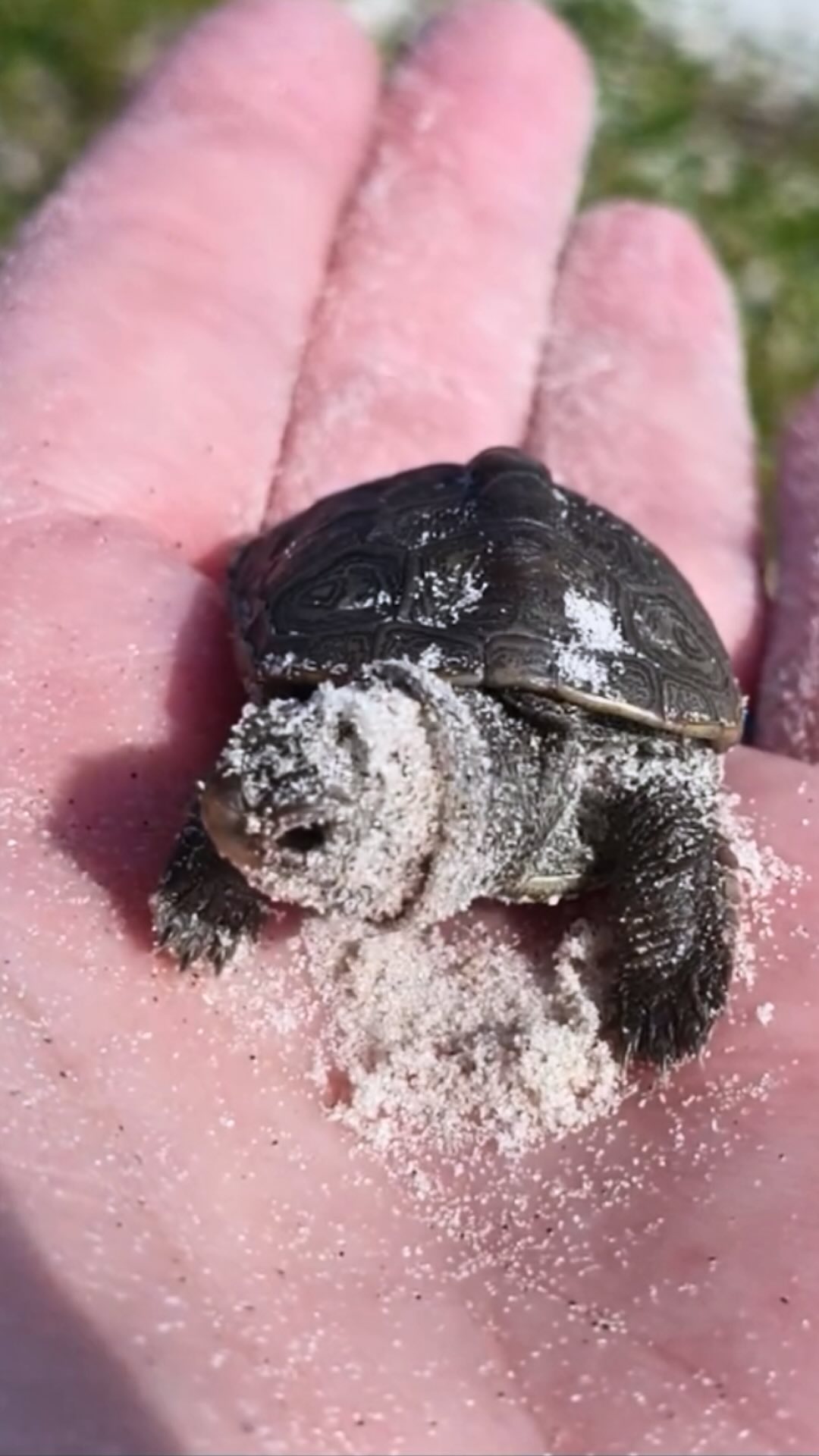- Importance of turtle hatchling conservation
- Overview of Team Terrapin’s efforts
- Life cycle and challenges of Carolina Diamondback Terrapins
- Role of high marsh as a natural nursery
- Broader implications for wildlife conservation
The enchanting journey of a turtle hatchling, though lasting mere moments, is a pivotal event in the cycle of life for the Carolina Diamondback Terrapin (Malaclemys terrapin centrata). This moment is worth capturing and deeply understanding, especially given the vulnerable status of this species on the IUCN Red List.
Importance of Turtle Hatchling Conservation
The conservation of turtle hatchlings is essential for maintaining the balance of coastal ecosystems. As integral components, terrapins feed on mollusks and crustaceans, helping control their populations and maintain a thriving ecosystem. The survival of each hatchling ensures the continuation of these crucial ecological interactions. However, hatchlings are incredibly susceptible to predators and environmental hazards. By focusing on their conservation, we support not just the species but also the broader ecological fabric.
Overview of Team Terrapin’s Efforts
Team Terrapin has played a crucial role along the coast of Northeast Florida. Their efforts focus on monitoring terrapin nests, protecting them from threats, and improving the probability of hatchling survival. These activities include marking and shielding nests, relocating those at risk, and keeping detailed records of hatchling emergence. Through sustained dedication, the team is enhancing the survival rates of these vulnerable creatures. Such proactive measures are invaluable for the long-term conservation of terrapins.
Life Cycle and Challenges of Carolina Diamondback Terrapins
Carolina Diamondback Terrapins have a distinct life cycle fraught with challenges. Beginning their life cycle as eggs buried under sand, they face numerous dangers from predation, tidal flooding, and human activities. Upon hatching, they must quickly navigate to the safety of the marshes. Predators like seagulls, crabs, and raccoons pose an ever-present threat. Given their vulnerable status, every stage of their life, from egg to adult, demands careful attention and protection.
Role of High Marsh as a Natural Nursery
The dense high marsh serves as an essential nursery for hatchling terrapins. This habitat provides shelter and abundant food, aiding in their survival during their early, most vulnerable days. The protection offered by dense vegetation reduces predation risks, while the food resources from marsh ecosystems are critical for their development. Understanding how terrapins utilize these marshes helps conservationists craft more effective management strategies.
Broader Implications for Wildlife Conservation
The efforts to save turtle hatchlings have significant implications for wildlife conservation. These activities reflect broader conservation principles, emphasizing habitat protection, species monitoring, and proactive intervention. Success in terrapin conservation can serve as a model for other species facing similar threats. By safeguarding turtle hatchlings, we contribute to the greater effort of maintaining biodiversity and ecosystem integrity.
Each hatchling’s emergence is a testament to the resilience of life. By ensuring the survival of the Carolina Diamondback Terrapin, we uphold the delicate balance of our coastal ecosystems. The dedication of organizations like Team Terrapin is critical in this endeavor, providing hope and tangible results in the ongoing battle for wildlife conservation.
*****
Source Description
Stop everything and spend the next 15 seconds with a turtle hatchling 💙
Team Terrapin has been monitoring terrapin nests along the coast of Northereast Florida all summer, and now the hatchlings are starting to emerge! With the tireless efforts of Team Terrapin, these hatchlings face a better chance at survival as they journey from the sandy beaches where they incubated to the natural nursery of the dense high marsh.
Pictured: Carolina Diamondback Terrapin (Malaclemys terrapin centrata)
IUCN Red List Status: Vulnerable
🎥: Tabitha Hootman
class=”instagram-media” data-instgrm-permalink=”https://www.instagram.com/reel/C_QduOsRrQk/” data-instgrm-version=”14″ style=” background: border:0; border-radius:3px; box-shadow:0 0 1px 0 rgba(0,0,0,0.5),0 1px 10px 0 rgba(0,0,0,0.15); margin: 1px; max-width:540px; min-width:326px; padding:0; width:99.375%; width:-webkit-calc(100% – 2px); width:calc(100% – 2px);”>


